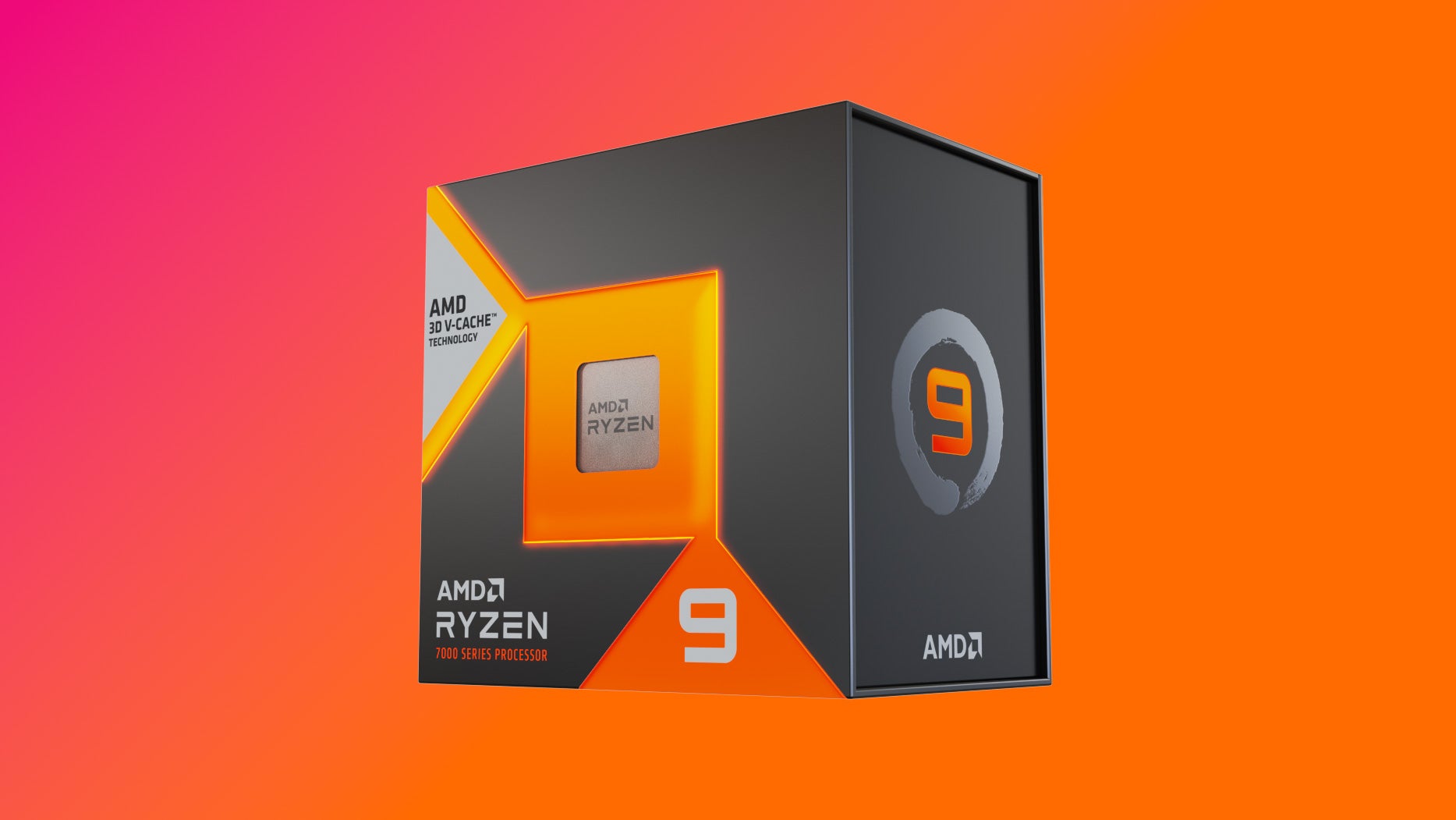The Ryzen 7 5800X3D was a truly special CPU for AMD, a fitting tribute to the long-lived AM4 platform with gaming performance that dwarfed other Ryzen 5000 processors thanks to its 3D V-Cache design. Now its first two successors have arrived to try and capture the same magic, the Ryzen 9 7950X3D and 7900X3D – with the Ryzen 7 7800X3D set to debut in April.
All three ought to be predigious performers, but can they wrest the ‘best gaming crown’ from Intel’s 13900K? And with a more capable socket, faster DDR5 RAM and a more advanced manufacturing process, is the bigger L3 cache as transformative for Ryzen 7000 as it was for Ryzen 5000? To find out, we’ve been testing the flagship Ryzen 9 7950X3D, which delivers 16 Zen 4 cores and 3D V-Cache for £699/$699 – the same RRP as the original 7950X.
Before we get into the content creation and gaming benchmarks, it’s worth outlining what makes the 7950X3D’s hardware so fascinating. Ryzen CPUs have used a chiplet design since their inception, with the low to mid-range parts using a single chiplet (“CCD” in AMD nomenclature) of up to eight cores and the high-end parts using two chiplets, and that continues with the 7950X3D. The big difference here is that the 7950X3D sports an asymmetric design, with one of its chiplets receiving the 3D V-Cache upgrade in exchange for a slight penalty in terms of maximum frequency, while the other chiplet retains the smaller cache size and frequency of the 7950X it’s based on.
You can see how the three Ryzen 7000X3D CPUs are positioned amongst their stablemates in the table below. As a reminder, each of these Zen 4 designs benefits from a range of improvements over their Zen 3 counterparts, with a quoted 13 percent uptick to instructions-per-clock (IPC) and more internal improvements, like an improved execution engine and a better branch predictor. There’s also DDR5 and PCIe 5.0 support, with 5nm CCDs and a 6nm I/O die, alongside the new AM5 socket which unlocks additional power and performance – albeit with the requirement of a new motherboard, new RAM and potentially new cooling.
| CPU design | Boost | Base | L3 cache | TDP | RRP | |
|---|---|---|---|---|---|---|
| Ryzen 9 7950X3D | Zen 4 16C/32T | 5.7GHz | 4.2GHz | 128MB | 120W | $699/£699 |
| Ryzen 9 7950X | Zen 4 16C/32T | 5.7GHz | 4.5GHz | 64MB | 170W | $699/£739 |
| Ryzen 9 7900X3D | Zen 4 12C/24T | 5.6GHz | 4.4GHz | 128MB | 120W | $599/£599 |
| Ryzen 9 7900X | Zen 4 12C/24T | 5.6GHz | 4.7GHz | 64MB | 170W | $549/£579 |
| Ryzen 9 7900 | Zen 4 12C/24T | 5.4GHz | 3.7GHz | 64MB | 65W | $429/£519 |
| Ryzen 7 7800X3D | Zen 4 8C/16T | 5.0GHz | 4.2GHz | 96MB | 120W | $449/TBA |
| Ryzen 7 7700X | Zen 4 8C/16T | 5.4GHz | 4.5GHz | 32MB | 105W | $399/£419 |
| Ryzen 7 7700 | Zen 4 8C/16T | 5.3GHz | 3.8GHz | 32MB | 65W | $329/£349 |
| Ryzen 5 7600X | Zen 4 6C/12T | 5.3GHz | 4.7GHz | 32MB | 105W | $299/£319 |
| Ryzen 5 7600 | Zen 4 6C/12T | 5.1GHz | 3.8GHz | 32MB | 65W | $229/£249 |
For our testing, we’re using the same basic setup as featured in our Ryzen 7600 review, just with the latest AMD chipset drivers installed. That means an ASRock X670E Taichi motherboard, G.Skill Trident Z5 Neo DDR5-6000 CL30 RAM and Asus’ RTX 3090 Strix OC for our graphics card. Cooling is provided by a 240mm Alphacool Eisbaer Aurora AiO, which is happily compatible with the new AM5 socket.
